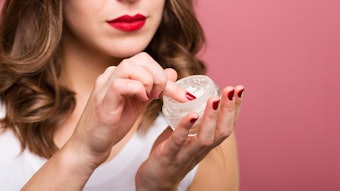
On Tuesday, May 4, 2021, Adeka will present natural biotechnology ingredients and bio-fermented beauty in a free webcast. Register now.
Related: Startup Solutions: A Survey of Green and Sustainable Innovations
Adeka will highlight various active ingredients such as Retinaturel (INCI: Glycerin (and) Retinal), Retinal O5 (INCI: Glycerin (and) Retinal (and) Xanthophylls), Majime Bio (INCI: Varies) and Halorubin (INCI: Glycerin (and) Xanthophylls).
Majime Bio
Majime Bio is a natural ingredient range produced via fermentation by lactic acid bacteria (LAB). Traditionally fermented substances such as fruit ferments are prebiotic and beneficial to the skin microbiome. The fermentation process brings bioactive compounds, amino acids and organic acid, which work synergistically with one another, to help improve skin health.
The functional properties of the Majime Bio extracts are optimized for: the elimination of anti-nutritional factors; the production of skin-effective metabolites (alpha-hydroxy acids); improvement in the absorption of bioactive compounds; and an increase of micronutrients (i.e., vitamins and mineral phenolic compounds), which then leads to an increase of each ingredient's antioxidant capacity.
Halorubin
Halorubin is made of the C50 carotenoid bacterioruberin, an antioxidant found in nature. This antioxidant is mainly produced by Haloarchaea to protect against light, DNA damage, UV irradiation and exposure to reactive oxygen species (ROS). According to the company, the degree of these activities depends upon the chemical structure, such as conjugated double bonds, terminal groups and carbon chain length. The ingredient exhibits 13 conjugated double bonds and 4 terminal hydroxyl groups along a 50 carbon chain. This structure is said to improve its antioxidant performance over other antioxidants such as tocopherol or β-carotene.
Featured: Extremophilic Microbes Produce Antioxidative, Photoprotective Carotenoids
Additionally, Halorubin increases membrane rigidity, acting as a “rivet” in cell membranes due to its four hydroxyl substitutes in the structure. It also decreases water permeability by acting as a barrier to prevent water loss from cells. The active is manufactured by a sustainable process via biofermentation using a specific strain of Haloarchaea named Halobacterium salinarum. The bioprocess production ensures constant quality and low environmental footprint by re-using raw materials for the fermentation cycle.
Retinaturel
Retinaturel contains natural retinal produced in the halophilic microorganism Halobacterium salinarum. Retinal is the direct precursor of retinoic acid and has been shown to exert anti-photoaging activity with fewer side effects than those typical of other retinoids. The active is 100% natural.
Retinal O5
Finally, Retinal O⁵ combines the safe protective activity of Halorubin with anti-aging benefits of Retinaturel. This combination is said to shield against blue light and provide anti-photoaging activity. It boosts cell protection while it also boosting skin hydration.
Learn more from the free webcast, coming May 4, 2021.









